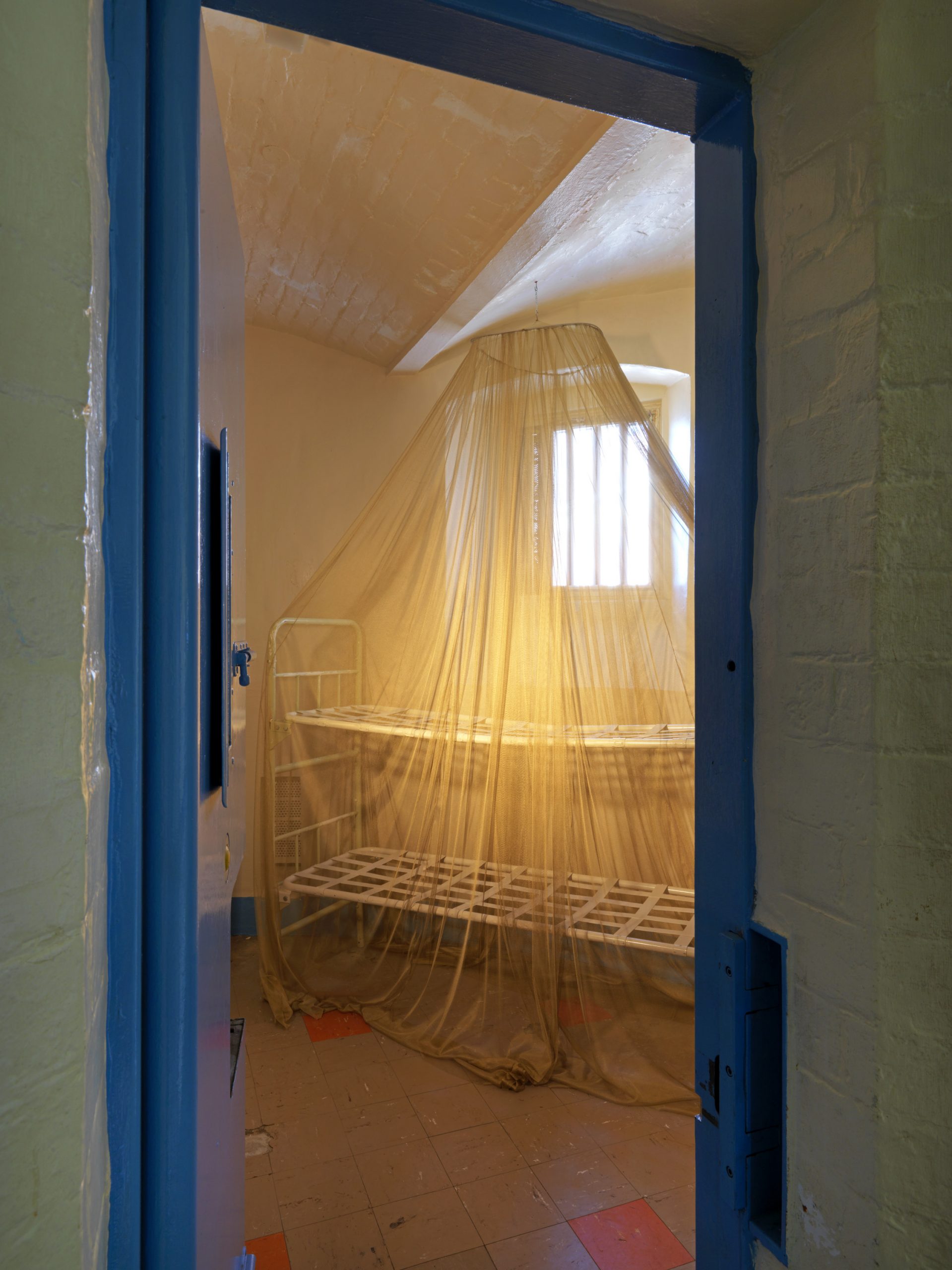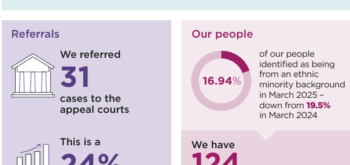‘Each death represents a failure of the state’: the unrecognised scandal of prison suicides
Many more prisoners took their own lives in prisons after staff numbers and resources were cut. Campaigners believe questions must be asked about political accountability for these deaths.
The Government must be held to account for the rapid rise in prisoners who killed themselves after staff and resources were slashed in our jails – a risk politicians were warned about at the time of the cuts, justice campaigners have said.
- This article first appeared on Byline.com here
- Follow Hardeep on Twitter for prisons and criminal justice updates @Hardeep_Matharu
In 2016, 120 inmates took their own lives in prisons in England and Wales, the highest figure to date since records began.
Although the number dropped to 68 in 2017 and stands at 27 so far this year, with a number of deaths still awaiting classification, former Chief Inspector of Prisons, Nick Hardwick, believes questions must be asked about the value placed on prisoners’ lives when decisions were taken to cut staff and resources in prisons in 2012.
“It is absolutely clear that the deliberate rise in the prison population and the deliberate reduction in staff led to a spike in avoidable deaths,” Mr Hardwick, who was recently sacked as chair of the Parole Board, told me.
“Now that both those things are being reversed – the population is coming down a bit and more staff are being recruited – the rate of deaths is falling. It seems to be incontrovertible. You can’t explain it as a coincidence when you’re putting the population up and you’re reducing staff, deaths go up. When you reduce the population and put staff in, deaths go down.
I think there’s an unrecognised scandal.
When we talk about accountability, lots of people died needlessly as a result of policy where ministers were warned that would be the effect of the policy. I think it is a much bigger scandal and a resigning matter.
There are big issues around that and lessons need to be learnt.
Nick Hardwick
Violence, self-harm, assaults and drug use have all rocketed in prisons since the then Justice Secretary Chris Grayling decided to cut spending and benchmark prisons against the private sector – a move which led to a severe staff shortages and restricted regimes, as a result of which prisoners are still being locked in their cells for up to 23 hours a day.
Although the prison population has been quietly reducing over the past six months and recruitment of more prison officers has been made a priority by the Government, deep-rooted problems remain.
Last week, upon the publication of what his office called ‘one of the most disturbing prison inspection reports in years’ – on HMP Nottingham – the Chief Inspector of Prisons, Peter Clarke, said: “For too long prisoners have been held in a dangerous, disrespectful, drug-ridden jail. My fear, which may prove to be unfounded, is that some could face it no longer and took their own lives.”
Between his two most recent inspections of the prison – in February 2016 and January 2018 – eight prisoners are believed to have committed suicide, with half of these deaths occurring over one four-week period last year.
Prisons and Probation Ombudsman Elizabeth Moody said that, again, lessons were not being learnt.
“It is highly troubling that HMP Nottingham has a history of failing to implement recommendations from our investigations into deaths at the prison,” she said. “Until it can demonstrate progress in this critical area the risk of future deaths will remain high.”
While suicides in prisons have started to decline, self-harm remains at “record highs”, with 44,651 incidents recorded last year, according to the Government’s latest figures.
Andrew Neilson, director of campaigns at the Howard League for Penal Reform, believes this is indicative of “the system putting all hands on deck for one issue, potentially neglecting other issues, and then running away from that to deal with whatever the next crisis is around the corner”.
I won’t be satisfied quite yet that we have really seen a sea change in the way the system is dealing with people at risk of suicide, until we’ve seen that this is a sustained improvement. Systemic issues still aren’t being dealt with. It’s constantly a case of emergency interventions and not actually a system-wide attempt to solve a problem.
Andrew Neilson, Howard League for Penal Reform
Mr Neilson said that while it is difficult to “categorically” attribute the rise in suicides in prisons to spending cuts, “it’s difficult at the same time not to draw the common sense conclusion from the timings that the numbers increased and the impact was felt as the cuts to staffing and resources bit,” he told me.
“You’ve got both less staff to proactively identify people at risk of self-harm and suicide, but also less staff and resources to deal with people who have been identified at risk. It is interesting that as resources have started to tip a little bit back the other way, there seems to be some reduction in the number of self-inflicted deaths. Clearly, once you had the 2016 record high, it became a big priority within the system and they were doing everything they could to try to bring those numbers down.”
Asked who should be held responsible for the increase in suicides, Mr Neilson said that “it’s never just about one individual” and that “there are bigger political things going on”.
Chris Grayling’s decisions had many negative consequences, he said, but Mr Grayling was implementing the budgets cuts that had already been agreed by his predecessor, Ken Clarke, who planned to reduce the prison population to achieve this – for which he did not receive the political backing necessary to deliver.
“If Chris Grayling wasn’t going to reduce the prison population to make the cuts, how was he going to do it?” Mr Neilson told me. “Well, he was going to have to take money out of the system.”
“In terms of accountability, one of the problems of our political system is that decisions are taken by ministers in departments and they move on and we’ve had quite the carousel when it comes to the MoJ,” he added.
Peter Dawson, director of the Prison Reform Trust, also believes that the drop in suicides is “about a prioritisation rather than a general improvement”.
“I don’t think anyone in the Prison Service needed to be told to get their attention back on it,” he said. “The key organisational change which has probably had an impact is that they’ve reintroduced regional coordinators around safer custody with a very specific focus on deaths.”
Self-harm is still high because the “depressive effect” of prison worsened as staff numbers were cut and regimes tightened, Mr Dawson said.
Prisoners, many of whom are vulnerable to mental illnesses, have found themselves in “an environment that has just become much more damaging”.
The former prison governor said he and his prison officers were briefed about the law on corporate manslaughter and gross negligence around the time the cuts were being introduced in 2012.
He believes the blame for the increase in suicides lies with politicians.
“If there has been a major strategic decision, which there was, to take all those resources out, where it was clear and obvious that the risk was that more people would die as a consequence, and that has come to pass, then there is a strong argument that there is a corporate responsibility for those deaths and that it sits at a political level,” he told me.
There is a direct accountability at a political level for an increase in the number of people who have died in prison. That hasn’t yet been explored in the courts.
Peter Dawson, Prison Reform Trust
No judicial review has been brought, to date, of the policies adopted by the Ministry of Justice in 2012 and their effect on prisoner safety.
In 2002, the European Court of Human Rights did find that the UK Government had breached the right to life of a prisoner with mental health problems, Christopher Edwards, who had died in HMP Chelmsford in 1994. He was stamped to death by his cellmate, who had schizophrenia. Christopher’s parents argued that the police, prison and doctors had all failed to protect their son’s life.

From ‘Inside: Artists and Writers in Reading Prison’: Marlene Dumas, Oscar Wilde (2016) c. Marcus J Leith Courtesy of Artangel
The spike and decline in prison suicides in the past few years is currently being examined by the Independent Advisory Panel on Deaths in Custody.
Its chair, Juliet Lyon, said that reducing the number of inmates killing themselves had “undoubtedly become a top priority for the Prison Service”.
But, she added: “How can we develop a consistent approach and a higher level of accountability so you don’t have this rollercoaster of tragedy, you don’t have a plunging into a really awful crisis followed by a rescue?
“It’s a very unhealthy way of managing what I think is our least visible, most-neglected public service. The answers have got to lie in increased accountability and that certainly goes right up to ministerial level.”
Ms Lyon said a “safeguarding and safety test” could be introduced to increase political accountability “where any major decision which involved significant changes in resources or staffing levels had to go up to the secretary of state with a statement on prisoner safety – so, will this have an impact on prisoner safety? If so, what is that likely to be? How are you going to mitigate that impact? So that everything is considered through that lens”.
She believes that fundamental questions must still also be asked around how we use prison, how it helps to address people’s vulnerabilities such as mental health needs, and whether people with mental health needs are being diverted from jail.
Andy Bell, deputy chief executive of the Centre for Mental Health, told me that, since the vast majority of prisoners have some form of mental health problem, recognition of the vulnerability of all prisoners must be the starting point, rather than staff reacting to individuals once they indicate vulnerability more overtly.
“We really do need to look not just at the provision of mental health support within prisons but actually change the way prisons work,” he said. “Probably all prisoners are at risk of serious self-harm, and in the worst cases suicide, and therefore you need to have a regime that responds to that and assumes that prisoners are vulnerable and works with them in a way which prioritises wellbeing.
“It’s about understanding that being in prison is extremely damaging to wellbeing.
We could really begin to reduce the number of people, particularly with the most serious mental health conditions, who end up in prison in the first place and that will undoubtedly save lives in a significant way.
Andy Bell, Centre for Mental Health
INQUEST, a charity supporting the families of victims of state-related deaths, has repeatedly brought to attention the lack of political and institutional accountability relating to suicides in prisons.
“Deaths in custody are an unacceptable, yet persistent long-term feature of the prison system,” Deborah Coles, executive director, said. “While there has been a reduction in deaths since 2016, the overall figures return to a trend consistent with patterns over recent decades.
“Many prison deaths are preventable. Coroner after coroner has highlighted systemic failures in physical and mental health care and the inappropriate use of prison for people who simply should not be there. Evidence-based recommendations from a stream of post-death investigations, inspectorate and monitoring reports and official inquiries into prisons are regularly ignored. Instead, prisons continue to be used as a dumping ground, to warehouse social problems such as mental ill health, addiction, poverty and homelessness.
Each death represents a failure of the state to protect the individual concerned. This contravenes national and international human rights standards, including the right to life.
Deborah Coles, INQUEST
I asked the Ministry of Justice for a response to the claim that suicides in prisons had increased as resources were cut and that such a risk was foreseeable. I also asked it who was accountable for a suicide of a prisoner where failings at the prison had been identified as contributing to the death.
A spokesman for the Ministry of Justice said: “Prisons have faced serious, new challenges over the last few years, including the rise in new psychoactive substances (NPS) and we have tackled this head on by bringing in 300 specialist drug dogs, new body scanners and making it a criminal offence to possess NPS in prison.
“But levels of suicide and self-harm in our prisons are too high and, although suicide rates are falling, there is more to do to continue this trend. That’s why we have launched a new suicide and self-harm reduction project, increased support during the first 24 hours in custody and invested in specialist mental health training for staff.
“We have already passed our target to recruit an additional 2,500 prison officers by the end of 2018 – this is crucial to give staff more time to support individual prisoners, including early mental health interventions.”
The MoJ said that prisons “would always look closely at all recommendations made by the Prisons and Probation Ombudsman and the coroner and would take the appropriate action to address these and learn any lessons including driving forward improvements to prison processes”.
In 2016, 25-year-old Dean Saunders electrocuted himself in his cell at HMP Chelmsford. Suffering from severe mental health problems, he had never been in prison before but ended up there after his father Mark was stabbed while trying to stop Dean from harming himself during a period of paranoia.
Following his son’s death, Mark Saunders said: “In this country, we do not give a death sentence, but for everyone who has taken their life in prison that is exactly what they got.”
Do you have an experience or story you would like to share? Get in touch by emailing: matharukhardeep@gmail.com
This article was published on May 28, 2018







